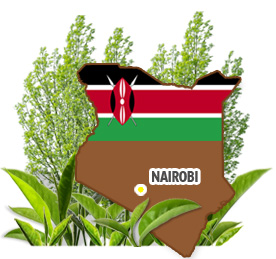Biodiversity
The indigenous forests surrounding Nandi Hills are an important area of biodiversity in Kenya with the North and South Nandi forests considered one of the Important Bird Areas (IBAs) of Eastern Africa. In 2010 Eastern Produce Kenya commissioned an initial survey into the biodiversity of our tea estates as part of our custodial management programme. Some of the highlights are recorded below and the full report can be accessed via the link following:
Link to Biodiversity Report (PDF)

- Identified 125 butterfly species, 47 dragonflies and damselflies, 247 bird species, 96 trees, shrubs and lianas, and 376 wildflowers and herbs; 891 species in total, and we anticipate this count to rise to over 1000 as the survey continues.
- Bird species recorded represent around 22 % of the total bird diversity of Kenya and includes many Western Kenya, forest-dependent species such as the Black-and-White Casqued Hornbill found on most of our estates.
- 125 species of butterfly have been recorded representing about 15 % of the total Kenyan diversity and we anticipate this number could rise to 300 as surveys continue. Some of the rarer species known in Kenya, such as Ansorge’sCharaxes (Charaxesansorgei) are found along the trails to the Kibabet tea estate.
- Geographic diversity is an important contributor to the richness of fauna in the area. North Nandi and the Western Mau Highland forest areas are where EPK’s higher altitude estates such as Sitoi are situated with fauna more typical of the rainforest environment. The survey revealed that a butterfly species,Vanessulamilca, thought only to be indigenous to the Kakamega forest, is also found at Sitoi, a similar rainforest environment. Wetland and swamp areas on our estates are an important environment for continued protection and restoration as they are a key habitat for the 37% of known dragonfly and damselfly diversity found in Kenya.


